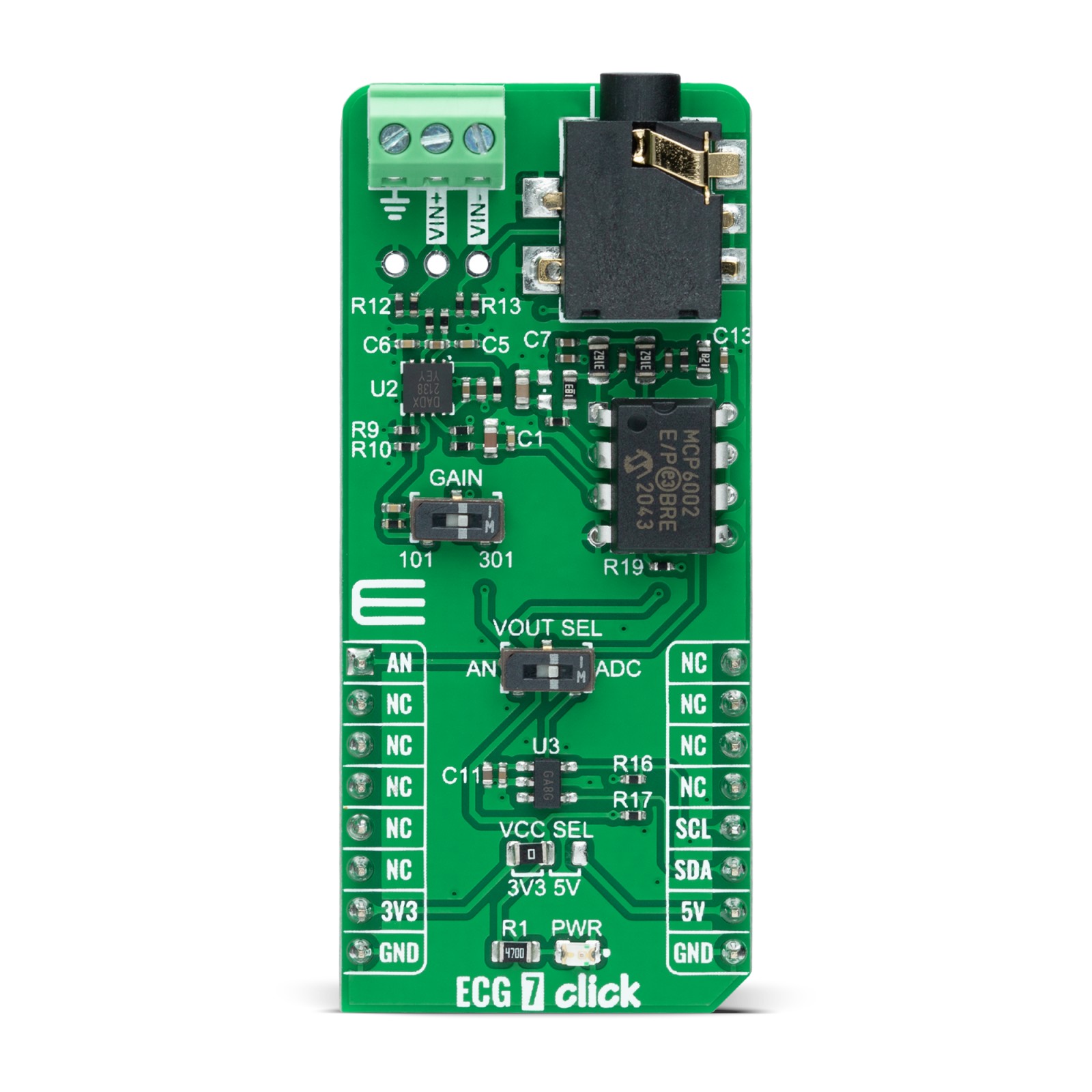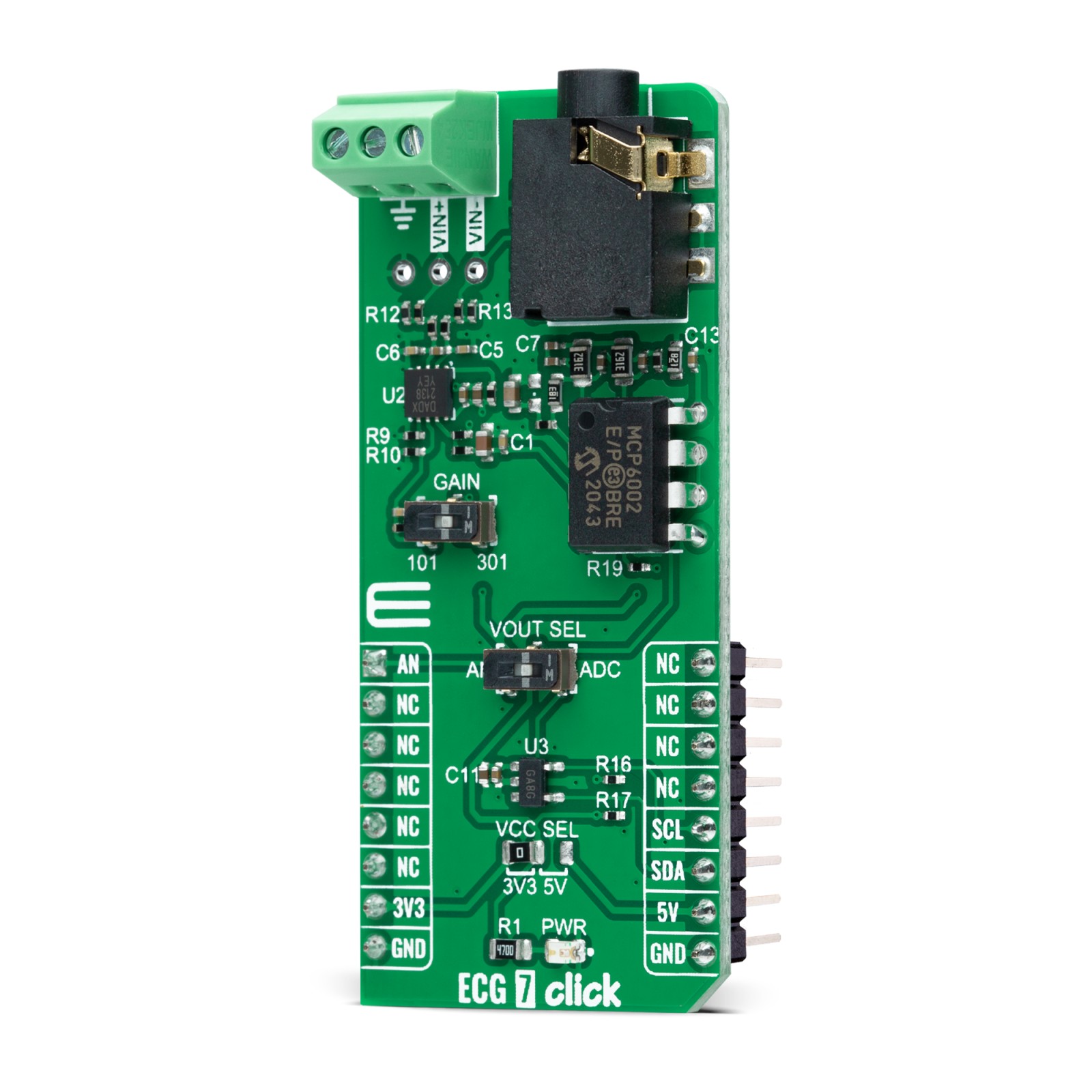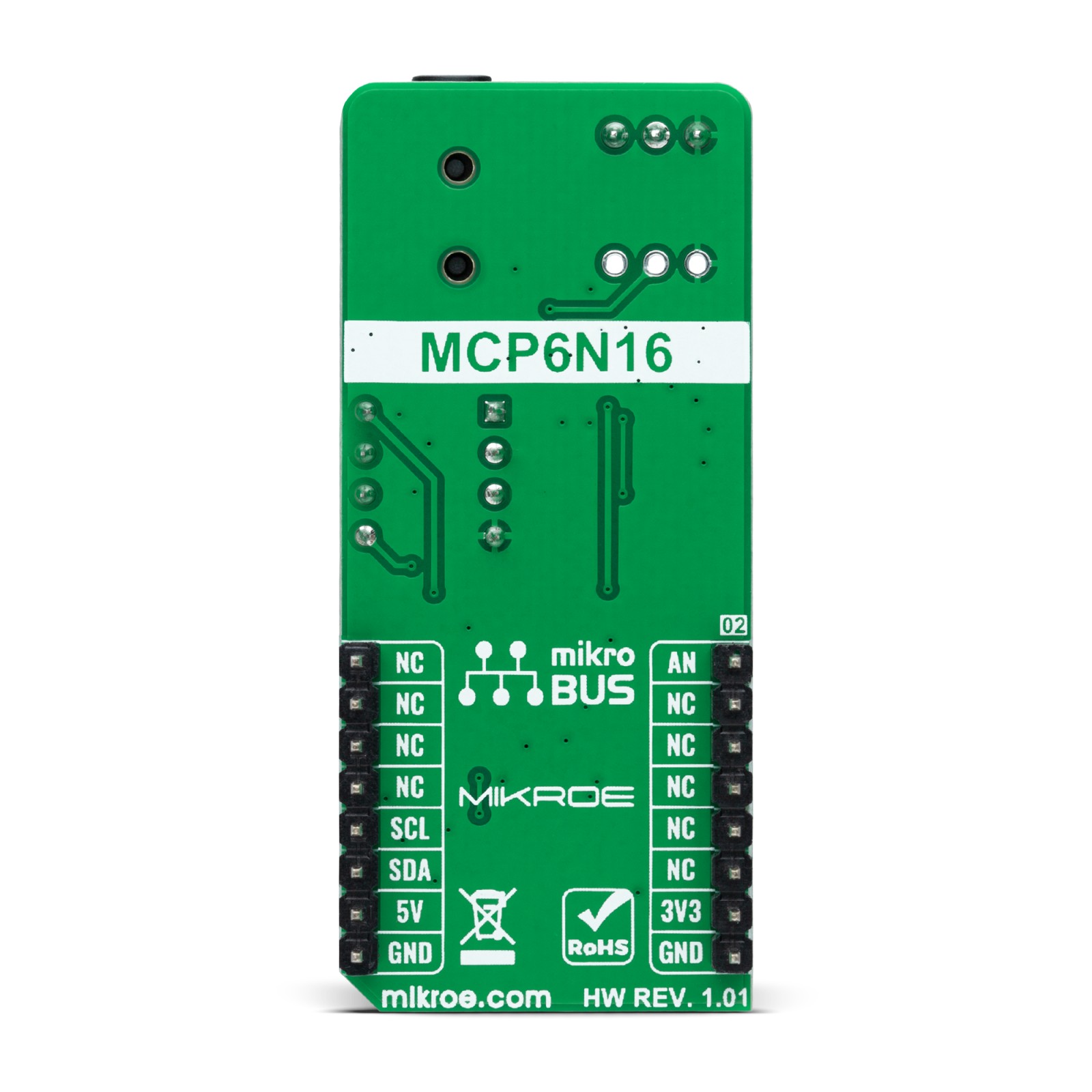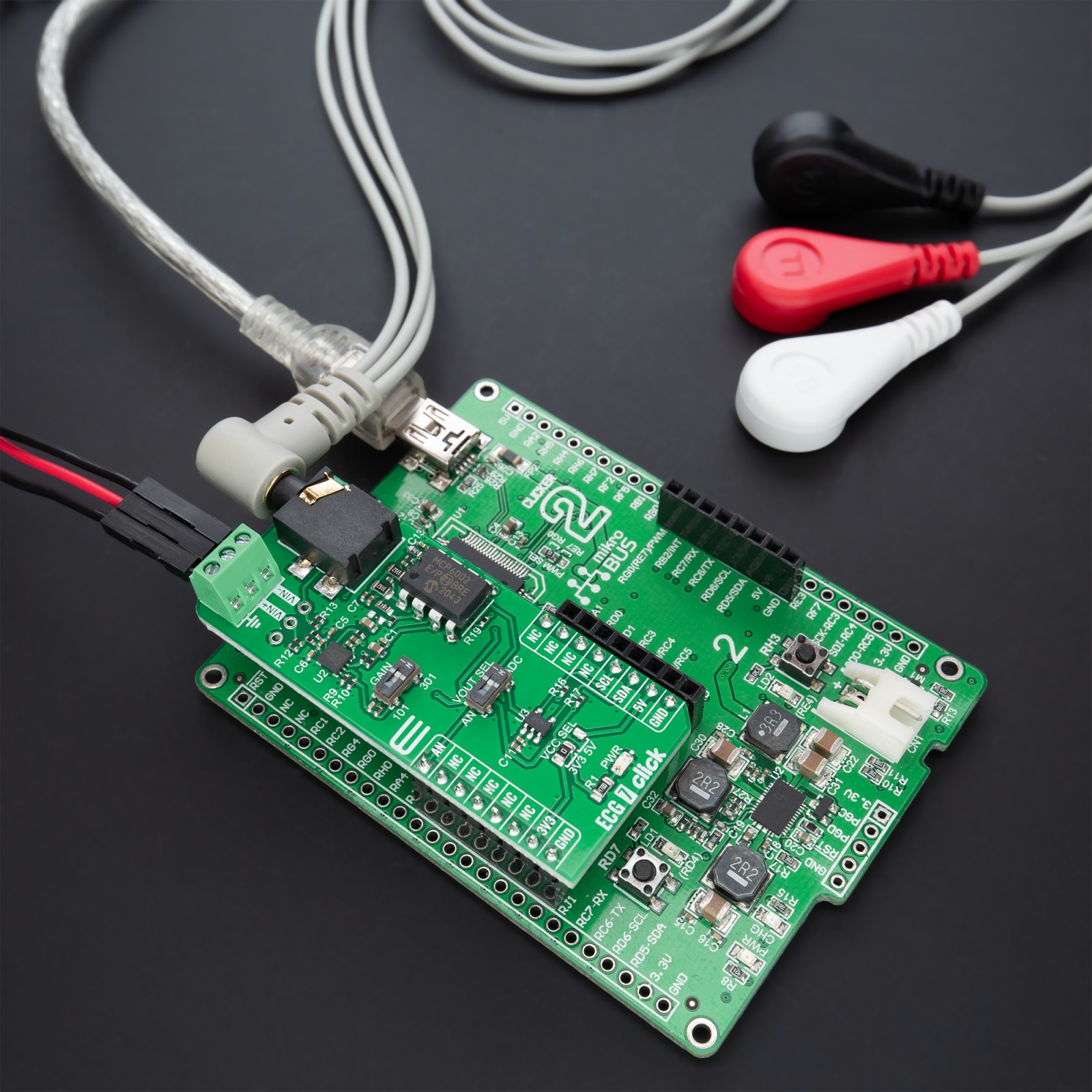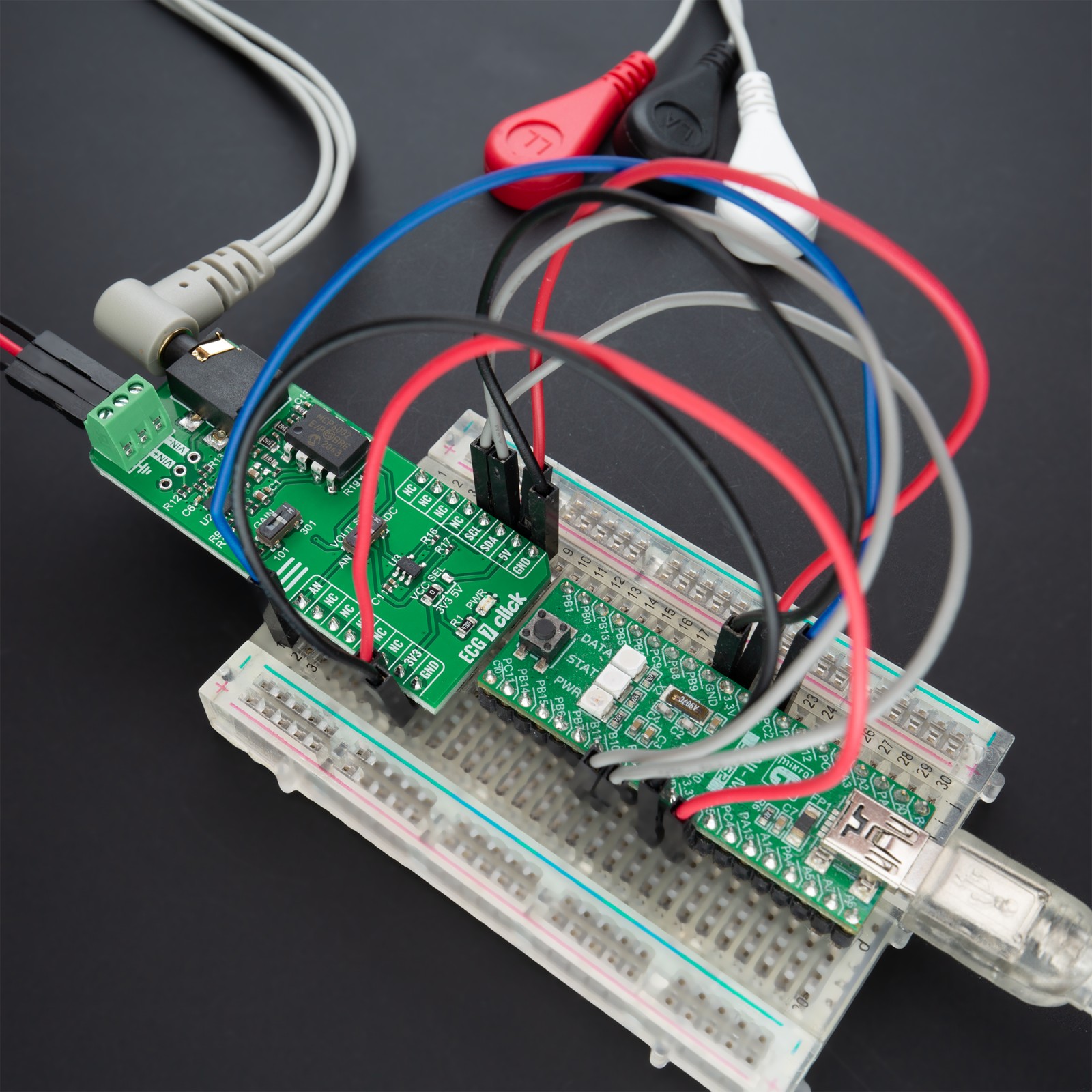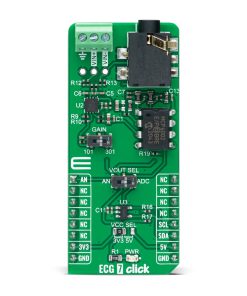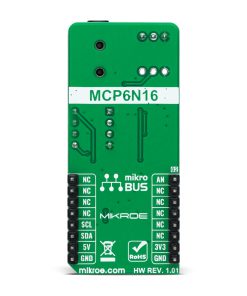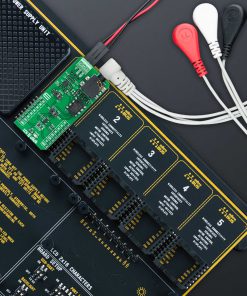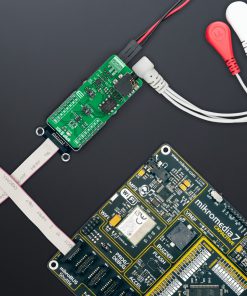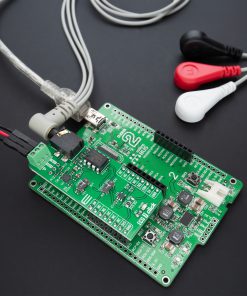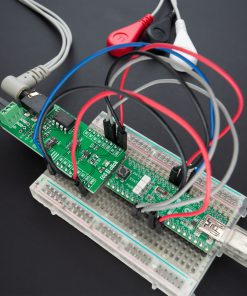ECG 7 Click
R560.00 ex. VAT
ECG 7 Click is a compact add-on board that records the heart’s electrical activity. This board features the MCP6N16, a single zero-drift instrumentation amplifier with selectable gain from Microchip. In addition to the jack connector provided for connecting the cable with ECG electrodes, this Click board™ offers the possibility of connecting electrodes through screw terminals or an onboard header if the electrode connection does not match the jack connector. Besides, the user is allowed to process the output signal in analog or digital form. This Click board™ is suitable for medical remote diagnostic equipment applications, such as electrocardiogram (ECG) measurement.
ECG 7 Click is supported by a mikroSDK compliant library, which includes functions that simplify software development. This Click board™ comes as a fully tested product, ready to be used on a system equipped with the mikroBUS™ socket.
Stock: Lead-time applicable.
| 5+ | R532.00 |
| 10+ | R504.00 |
| 15+ | R476.00 |
| 20+ | R458.08 |

